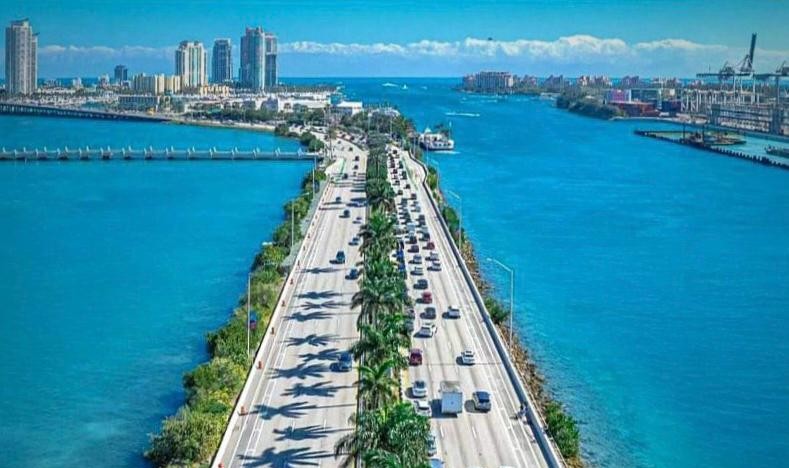A guide for demanding investors looking for profitability, perceived value and asset security.
Miami goes far beyond a trendy destination. It is a global city that combines quality of life, portfolio diversification and international liquidity. For those who invest with a long-term vision, the challenge is not just to find a good property, but to identify an asset that combines potential for appreciation, intelligent use and long-lasting character.
Prime location: stable value in micro-territories
Location is an essential factor, but it’s not everything. Submarkets such as South of Fifth, Sunny Isles, Coral Gables, Bal Harbour and Edgewater have shown consistent performance, with annual appreciation of between 6% and 9% in recent years, according to the Miami Association of Realtors.
Just as important as the county is the micro-territory: being within walking distance of relevant gastronomic spots, premium stores and access to the water usually reflects greater liquidity and desirability. Proximity to marinas, shopping centers like Brickell City Centre or the Design District, canals and the sea are real differentials for future value.
Signature Architecture: design that adds value
Buildings designed by names such as Zaha Hadid, Jean Nouvel or Norman Foster tend to attract buyers who value design, but also offer differentials on the resale market. Other relevant examples in the region include Faena House (Foster + Partners), Monad Terrace (Jean Nouvel), Missoni Baia (Asymptote Architecture), Ritz-Carlton Residences Miami Beach (with interiors by Piero Lissoni) and Aria Reserve (Arquitectonica), all with unique architectural proposals and strong appeal to a global audience. Developments such as One Thousand Museum and Eighty Seven Park have shown good price performance and low vacancy.
Projects with recognized architecture are usually guaranteed:
- Good acceptance on the secondary market;
- Differentiation from the competition;
- Perception of quality and constructive care.
Hospitality services: comfort as added value
In high-end developments, services such as concierge, housekeeping, spa and lifestyle management are becoming increasingly common. According to JLL, projects with integrated hotel management have a resale value up to 12% higher than similar residential condominiums.
Aspects to consider:
- Trained staff and internal structure;
- Consistent service standards;
- Integration with experiences and well-being.
Proximity to water: a tangible differentiator in Miami
Facing the bay, canal or sea brings a real difference in value. According to Knight Frank, properties with a view or direct access to the water can cost up to 35% more than similar units, and this exclusivity makes these units highly sought after and more liquid.
It’s important to note:
- Quality of the marina (draft/depth and services);
- Quick access to the ocean;
- Proximity to nautical destinations.
Interior design: versatile, well-resolved spaces
Increasingly, buyers value functional floor plans and customization options. It’s a differentiator when the property offers:
- Layouts that can be adapted;
- Recognized quality finishes (e.g. Boffi, Gaggenau);
- Infrastructure for residential technology;
- White box delivery option.
Short-term rental income potential
The short-term rental (STR) market in Miami is growing as a monetization alternative. AirDNA data shows that properties with 3+ bedrooms can generate daily rates from US$700 to US$2,500, with an average occupancy of 65%.
For this, it is essential that the property is located in a favorable zoning, has adequate infrastructure and can be operated by professional managers.
What to check before signing
- Developer: Delivery history, construction quality and any disputes.
- Condominium: Financial health, reserve fund and absence of foreseeable extraordinary charges.
- Liquidity and appreciation: Resale performance of similar units in recent years.
- Use and rental: HOA rules on rentals, especially short-term rentals.
- Operating costs: Condominium, tax, insurance and maintenance.
- Governance: Quality of management and transparency with owners.
Conclusion
Investing in a good property in Miami means thinking about present and future value. Beyond lifestyle, it’s about building an asset that can go through economic cycles with relevance and liquidity.
With clear criteria and good advice, it’s possible to turn a real estate purchase into an asset with lasting value. The Miami market continues to be hot and full of opportunities for those who know what to look for.

